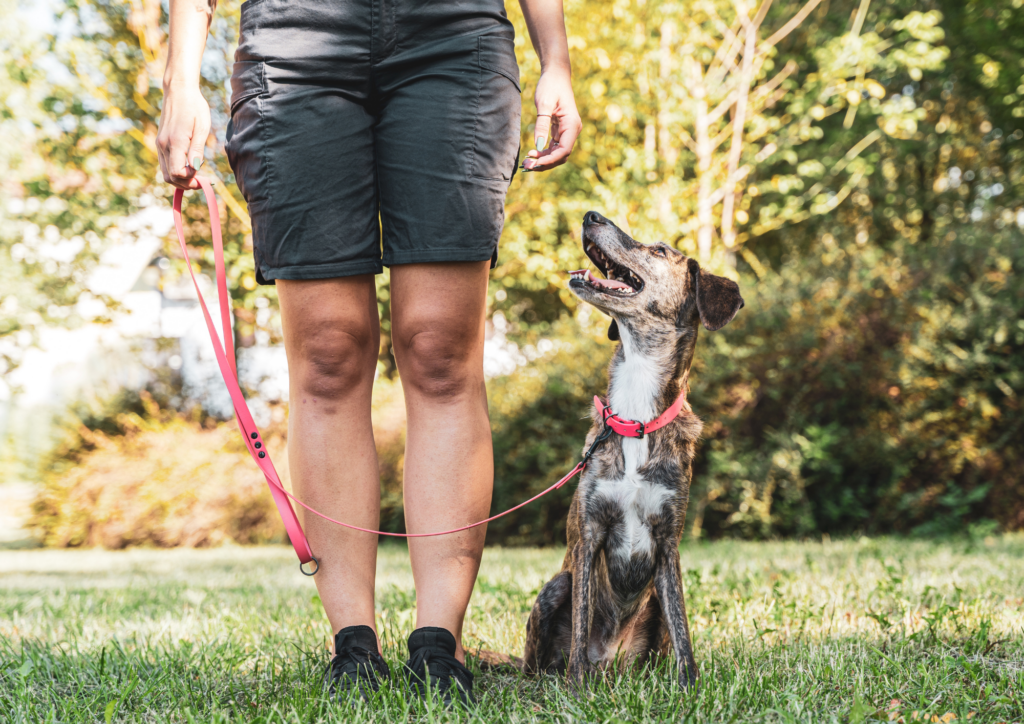

With recent attention on the lack of regulation in Australia’s dog care and training industry – where no formal qualifications or minimum standards are required for trainers, walkers, or daycare providers in New South Wales – many Aussie dog owners are left questioning who and what to trust.
According to accredited dog behaviourist, certified force-free trainer and bestselling author Sarah Rutten, it’s no wonder confusion is so common.
“There’s so much advice online, and not all of it comes from people with the right qualifications or education behind them,” Sarah says.
“Most dog guardians are just trying to do their best for their four-legged friends, but some are unknowingly led astray by advice that isn’t grounded in real behavioural science.”
Drawing on more than 20 years of experience in the industry, Sarah shares the five most common training mistakes she sees, and what to do instead to build a closer and stronger bond with your pup.
1. Using Outdated, Punishment-Based Methods
Many people still believe dogs need to be “put in their place”, but training through fear or punishment-based methods often damages the bond between you and your dog.
Do this instead: Focus on teaching your dog what you want them to do. “Positive reinforcement helps your dog feel safe enough to learn,” Sarah says. “When they’re rewarded for getting it right, they’re more confident, more connected, and actually want to keep trying.”
2. Inconsistency and Confusing Communication
Dogs thrive on clarity and structure. Changing the rules or being inconsistent can leave them unsure of what’s expected.
Do this instead: Keep your training cues simple and consistent. “Good leadership isn’t about control,” Sarah says. “It’s about clear communication. When we’re predictable, our dogs relax and learn faster.”
3. Missing What Really Motivates Your Dog
Not all dogs work for the same rewards. Some love treats, others light up for play or praise – and if we miss what drives them, learning can stall.
Do this instead: Pay attention to what your dog genuinely loves. “Finding what truly motivates them isn’t bribery,” Sarah says. “Figure out what makes your dog tick and use that to build new skills and confidence.”
4. Accidentally Rewarding the Wrong Behaviour
Sometimes we can reinforce problem behaviours without meaning to – for example, giving attention to a dog that jumps or barks for attention.
Do this instead: “When your dog performs an unwanted behaviour, give them no attention – meaning no eye contact and no words,” Sarah says. “Then, ask for an alternative behaviour and praise that instead. Dogs repeat what gets them positive attention, so make it easy for them to choose the right behaviour.”
5. Expecting Too Much, Too Soon
Dogs, especially puppies, don’t learn everything overnight. Pushing too hard, too fast can lead to frustration for both of you.
Do this instead: Keep training sessions short, fun, and full of small wins. “Patience is your best training tool,” Sarah explains. “Every small success builds your dog’s confidence and deepens your bond.”
Sarah adds that with so many unverified training methods online, it’s important for owners to seek guidance from qualified, force-free professionals who use methods grounded in behavioural science.
“There’s no one-size-fits-all approach,” she says. “The goal isn’t perfection – it’s all about building trust, connection, and a relationship where both you and your dog can thrive.”
..//ENDS
About us:
More information:
For more expert advice on dog behaviour and force-free training, check out Sarah’s website and her book The Canine Perspective: Using Force-Free Methods to Unleash Your Dog’s Paw-tential.
Contact details:
Ellen Hill | 0424 791 904 | [email protected]

